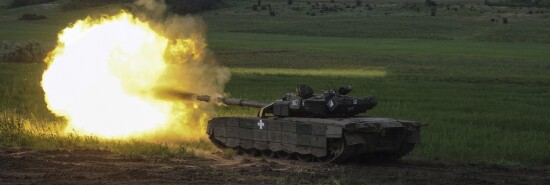
Why even limited Ukrainian breakthroughs will pose special challenge for Russian forces
Tom Rogan
Ukraine’s much-anticipated counter-offensive is underway. Thus far, Russian forces are holding their own in most locations. Ukrainian forces have suffered casualties, losing at least one German Leopard 2 tank. The offensive seems to center on a push south along the Dnieper River deeper into the Zaporizhzhia Oblast, and other pushes ranging east on the Donetsk Oblast front line.
Ukrainian forces are proceeding cautiously at present.
WILDFIRE SMOKE MAP: TRACK MASSIVE HAZE IN REAL TIME ACROSS THE US
A major commitment of massed combined arms forces is not apparent at any one location. This indicates Ukrainian commanders may yet be attempting to exploit suspected Russian weak points while simultaneously seeking out new weak points. If so, what we’re seeing is a mix of limited tactical thrusts and reconnaissance in force operations. Kyiv’s key strategic objectives remain unclear, but are likely to center on the dissecting of Russian forces in Crimea from Russian forces in eastern Ukraine.
Russian commanders and Vladimir Putin, in particular, can be relieved that their lines haven’t buckled. Their concern will be that Ukrainian forces might achieve limited tactical breakthroughs in some areas. If that occurs and if Ukraine can hold those breakthroughs while maintaining the offensive initiative?
Well, the Russians will have a big problem.
The key here is that Russian forces have shown a systemic inability to conduct orderly retreats where Ukraine has previously achieved even limited breakthroughs during the war. Russian command and control are spotty, and its associated communications are highly vulnerable to Ukrainian interception.
Crucially, also, Russian forces have also shown a willingness to retreat on a small unit-by-unit basis rather than on a regimental or divisional basis. That creates gaps and the opportunity for Ukraine to maneuver with relative freedom. Oh, their conflict with the Wagner Group aside, various Russian commanders hate each other.
What’s different this time around, however, is that Ukrainian forces now have an array of Western armored vehicles, tanks, fuel reserves, advanced munition stocks, and other capabilities that they have reserved for this moment.
In contrast, the Russian munition and supply base is spread thin.
If highly maneuverable Ukrainian armor and mechanized infantry forces can achieve breaks and exploit them, Russian lines may suffer endemic implosions. Even if Russian units are holding in some areas, if those units know or believe that others nearby are retreating, they themselves may well retreat in fear of being surrounded.
CLICK HERE TO READ MORE FROM THE WASHINGTON EXAMINER
Again, where Ukraine has shown an ability to conduct organized retreats and establish new lines under offensive pressure, Russian forces have not. And the personnel manning Russian reserve lines necessary to plug front-line gaps lack the morale, professionalism, and skill of their front-line counterparts.
Put simply, Russia’s ability to withstand this offensive is likely to depend greatly on its ability to maintain defensive cohesion across multiple front lines. I doubt they’ll succeed.
